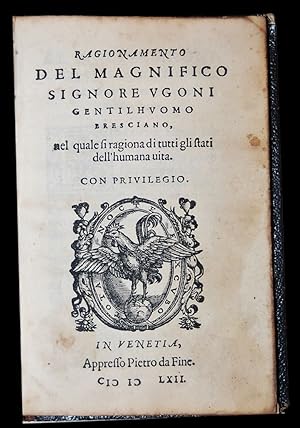personal heresy (26 Ergebnisse)
Produktart
- Alle Produktarten
- Bücher (26)
- Magazine & Zeitschriften
- Comics
- Noten
- Kunst, Grafik & Poster
- Fotografien
- Karten
-
Manuskripte &
Papierantiquitäten
Zustand
Einband
Weitere Eigenschaften
Land des Verkäufers
Verkäuferbewertung
-
The Sky's Dark Labyrinth (The Sky's Dark Labyrinth Trilogy, Book 1)
Verlag: Birlinn General, United Kingdom, Edinburgh, 2011
ISBN 10: 1846972159ISBN 13: 9781846972157
Anbieter: WorldofBooks, Goring-By-Sea, WS, Vereinigtes Königreich
Buch
Paperback. Zustand: Very Good. At the dawn of the seventeenth century everyone believed that the sun revolved around the earth. Yet some men knew that the heavens did not move as they should. And some men began to suspect that this heresy was in fact the truth. As Europe convulsed in conflict between Catholic and Protestant, these men prepared to die for that truth. This is the story of Kepler and Galileo, two men whose struggle with themselves, with the evidence and with the forces of reaction changed not simply themselves but our world. The Sky's Dark Labyrinth is the first of a trilogy of novels inspired by the dramatic struggles, personal and professional, and key historical events in man's quest to understand the Universe. The book has been read, but is in excellent condition. Pages are intact and not marred by notes or highlighting. The spine remains undamaged.
-
The Sky's Dark Labyrinth (The Sky's Dark Labyrinth Trilogy)
Verlag: Birlinn General, United Kingdom, Edinburgh, 2011
ISBN 10: 1846971748ISBN 13: 9781846971747
Anbieter: WorldofBooks, Goring-By-Sea, WS, Vereinigtes Königreich
Buch
Paperback. Zustand: Very Good. At the dawn of the seventeenth century everyone believed that the sun revolved around the earth. Yet some men knew that the heavens did not move as they should. And some men began to suspect that this heresy was in fact the truth. As Europe convulsed in conflict between Catholic and Protestant, these men prepared to die for that truth. This is the story of Kepler and Galileo, two men whose struggle with themselves, with the evidence and with the forces of reaction changed not simply themselves but our world. The Sky's Dark Labyrinth is the first of a trilogy of novels inspired by the dramatic struggles, personal and professional, and key historical events in man's quest to understand the Universe. The book has been read, but is in excellent condition. Pages are intact and not marred by notes or highlighting. The spine remains undamaged.
-
THE PERSONAL HERESY: A CONTROVERSY.
Verlag: Oxford University Press,, London,, 1939
Anbieter: Burwood Books, Wickham Market, Vereinigtes Königreich
Verbandsmitglied: PBFA
Erstausgabe
Hardcover. Zustand: Very Good. First Edition. Hardback. No Dustjacket. 8vo. Original publisher's green cloth lettered gilt at the spine. pp vii, 150. Endpapers slightly tanned else clean very good copy with clean text. and no inscriptions.
-
The Personal Heresy. A Controversy.
Verlag: Oxford University Press, 1939
Anbieter: Blackwell's Rare Books ABA ILAB BA, Oxford, Vereinigtes Königreich
FIRST EDITION, occasional light foxing throughout, pp. [viii], 150, crown 8vo, original green cloth, backstrip lettered in gilt, edges and endpapers lightly spotted, the flyleaf with ownership inscription of 'Basil Mitchell, Keble College, Oxford' (see below), very good. A scholarly tussle engendered by Lewis's response to Tillyard's 1930 work on Milton. Lewis objected to Tillyard's central tenet that 'Paradise Lost' was 'really about [.] the true state of Milton's mind when he wrote it' (Tillyard, 'Milton', p. 237); in Lewis's own copy of the book he classifies this remark of Tillyard's as 'the arch error', whilst a similar assertion two pages later receives terse damnation - 'fatal'. Expanding on his disapproval with an essay 'The Personal Heresy in Criticism', Lewis drew a rejoinder from Tillyard, and these along with two further articles and responses between the two men are collected in this volume 'The Personal Heresy: A Controversy'. Lewis relished the battle and maintained a mocking affection for his opponent - 'he's the nicest donkey you can imagine', he wrote in a letter from 1944. The copy of Oxford philosopher, Basil Mitchell, dating from his time at Keble College, where he was a tutor from 1947; he had previously attended Queen's College, Oxford and was later appointed Nolloth Professor of the Philosophy of the Christian Religion at Oxford University and Fellow of Oriel College, Oxford. Mitchell was a member of the Socratic Club at the same time as Lewis, and succeeded him as its President.
-
The Personal Heresy. A Controversy
Verlag: Oxford University Press, London, 1939
Anbieter: Between the Covers-Rare Books, Inc. ABAA, Gloucester City, NJ, USA
Erstausgabe
Hardcover. Zustand: Fine. Zustand des Schutzumschlags: Near Fine. First edition. Octavo. 150, [1]pp. Dark green cloth gilt. Fine, bright copy in modestly spine-toned near fine bright, dust jacket. Essays.
-
The Personal Heresy: A Controversy.
Verlag: Oxford University Press, London, 1939
Anbieter: Raptis Rare Books, Palm Beach, FL, USA
Erstausgabe Signiert
First edition of this collection of arguments on the subjective and objective positions of writings, with C.S. Lewis arguing the latter. Presentation copy, inscribed by C.S. Lewis on the front free endpaper, "R.W. Fletcher from C.S.L. March 20th 1940." In near fine condition. Exceedingly rare signed and inscribed by Lewis. A series of articles, three each by C.S. Lewis and E. M. W. (Eustace Mandeville Wetenhall) Tillyard, The Personal Heresy is concerned with whether a piece of imaginative writing, particularly poetry, is primarily a reflection of the author's personality (Tillyard's position) or is about something external to the author (Lewis's position). The two positions may be summarized briefly as the subjective position (Tillyard) and the objective position (Lewis). In general, Lewis attempts to keep poetry within the reach of the common person, while Tillyard thinks of the poet as a person who is "a cut above the common person.".
-
Horus Heresy - False Gods
Verlag: Games Workshop Ltd Sep 2014, 2014
ISBN 10: 1849707464ISBN 13: 9781849707466
Anbieter: Smartbuy, Einbeck, Deutschland
Buch
Taschenbuch. Zustand: Neu. Neuware - Far from Terra, the XVIth Legion continue in the Great Crusade as the 'Sons of Horus'. Putting the debacle with the interex behind him, the Warmaster has become more withdrawnas he struggles to deal with the jealousy of his brother primarchs, and increasingly relies on the council of his advisors as he plans each new campaign. Noble captain Garviel Loken harbours misgivings about the clandestine ways adopted by many of his brethren, but when the Legion is sent to reconquer the moon of Davin, it is clear that Horus has a personal stake in the matter which may have clouded his judgement. With dark forces rising against them, have the pimarch and his warriors been drawn into a trap 416 pp. Deutsch.
-
Heresy, Crusade and Inquisition in Medieval Quercy
Verlag: Woodbridge: York Medieval Press in association with Boydell & Brewe, 2011
Anbieter: BookLovers of Bath, Peasedown St. John, BATH, Vereinigtes Königreich
Hardback (No Dust Wrapper.). Zustand: Near Fine. Hardback. Physically 9½" x 6¼" (1 kg); (xii) 277pp; Index; Bibliography; In the Heresy & Inquisition in the Middle Ages series; Number 2 in the series. Includes: Maps; List of abbreviations; Genealogical tables; ISBN: 978-1-9031-5338-3 || The book is on my shelves and will be carefully packed and posted from the pastoral paradise of Peasedown St. John, Bath, by a real bookseller in a real book shop - with my personal guarantee and my beady eye on the Consumer Contracts Regulations. REMEMBER! Buying my copy means the bookshop Jack Russells get their supper! My Book #190396|| Condition:
-
AFTER STRANGE GODS: A Primer of Modern Heresy.
Verlag: London: Faber and Faber., 1934
Anbieter: LUCIUS BOOKS (ABA, ILAB, PBFA), York, Vereinigtes Königreich
First edition, first printing. Original black cloth lettered in gilt to the spine, in dustwrapper. A near fine copy, the binding square and firm, the cloth and gilt sharp, the contents clean throughout. Lower and fore-edges untrimmed. Very light scattered spots to endpapers. In the lightly rubbed dustwrapper, a little darkened to the spine, with a few nicks and chips to spine tips, edges and corners. Not price-clipped (3s. 6d. net to the front flap). A very presentable copy of Eliot's controversial 1933 Page-Barbour Lectures. Eliot delivered the three lectures published as 'After Strange Gods' as the Page-Barbour Lectures at the University of Virginia in 1933. The lectures pick up the implications the earlier essay, 'Tradition and the Individual Talent', written fifteen years earlier and collected in 'The Sacred Wood' (1920). The tradition addressed in that essay was literary; by the early thirties Eliot (a recent convert to Christianity) was more concerned with cultural traditions, and those of religion in particular, the lectures diagnosing a "weakness of modern literature, indicative of the weakness of the modern world in general", as the jacket has it. Written, as Jeffrey Meyers notes, "during a period of intense emotional turmoil and personal guilt" surrounding the breakdown of Eliot's first marriage, the published lectures are best known today for having been withdrawn by the author after a single reprint and having never been reissued. This may or may not have been owing to a passage which is difficult not to see as an expression of anti-semitism, a passage which may or may not have been symptomatic of emotional turmoil. The lectures are also notable for containing Eliot's harsh opinions on Hardy and Lawrence ("Hardy is condemned and Lawrence appears as a suppôt de Satan" he wrote to Paul Elmer Moore in 1933). Describing himself in 1928 as "classicist in literature, royalist in politics, and Anglo-Catholic in religion", Hardy, an atheist, was for Eliot, "a powerful personality uncurbed by any institutional attachment or by submission to any objective beliefs". It is an opposition presented at its starkest in these lectures. Published 22 February 1934, 3000 copies were printed (Gallup A25a). Further details and images for any of the items listed are available on request. Lucius Books welcomes direct contact with our customers.
-
Spinoza's Heresy. Immortality and the Jewish mind. ISBN 9780199247073
Verlag: Clarendon Press, 2001
ISBN 10: 0199247072ISBN 13: 9780199247073
Anbieter: Antiquariaat Spinoza, Amsterdam, Niederlande
Buch
Oxford, Clarendon Press, 2001. XVI, 225 pp. Very good copy. Hardcover with dustjacket. Spine discolored. First edition. At the heart of Spinoza's Heresy is a mystery: why was Baruch Spinoza so harshly excommunicated from the Amsterdam Jewish community at the age of twenty-four? In this philosophical sequel to his acclaimed, award-winning biography of the seventeenth-century thinker, Steven Nadler argues that Spinoza's main offence was a denial of the immortality of the soul. But this only deepens the mystery. For there is no specific Jewish dogma regarding immortality: there is nothing that a Jew is required to believe about the soul and the afterlife. It was, however, for various religious, historical and political reasons, simply the wrong issue to pick on in Amsterdam in the 1650s. After considering the nature of the ban, or cherem, as a disciplinary tool in the Sephardic community, and a number of possible explanations for Spinoza's ban, Nadler turns to the variety of traditions in Jewish religious thought on the postmortem fate of a person's soul. This is followed by an examination of Spinoza's own views on the eternity of the mind and the role that that the denial of personal immortality plays in his overall philosophical project. Nadler argues that Spinoza's beliefs were not only an outgrowth of his own metaphysical principles, but also a culmination of an intellectualist trend in Jewish rationalism.
-
Fallen Order: Intrigue, Heresy, and Scandal in the Rome of Galileo and Caravaggio.
Verlag: New York : Grove Press, 2004
ISBN 10: 0802117848ISBN 13: 9780802117847
Anbieter: Fundus-Online GbR Borkert Schwarz Zerfaß, Berlin, Deutschland
Buch
Zustand: Gut. XXXII, 336 p., maps, plates. From the library of Prof. Wolfgang Haase, long-time editor of ANRW and the International Journal of the Classical Tradition (IJCT). - Minimally rubbed jacket, overall very good condition. / Minimal beriebener Umschlag, insgesamt sehr guter Zustand. - For hundreds of years the Piarist Order of priests has been known for its history of important contributions to education, science, and culture. Throughout Italy, Spain, and central Europe, the order s schools evolved from shelters created to educate poor children into exclusive private academies. Thousands of children were educated at Piarist schools, including Mozart, Goya, Schubert, Victor Hugo, Johann Mendel, and a host of astronomers, kings, emperors, presidents, even a pope. Yet in 1646, the Piarist Order was abruptly abolished by Pope Innocent X, an unprecedented step not seen since the Knights Templar were suppressed for heresy in the fourteenth century. Fallen Order is the stunning story of how the sexual abuse of children, practiced by some of the leading priests in the order, led to the Piarists collapse. Karen Liebreich spent several years researching in the order s archives and in the Vatican Secret Archive, and discovered how the founder of the Piarist Order, Father Jose de Calasanz (later honored as the patron saint of Catholic schools) knew of the scandal and tried to keep it a secret. Cardinals and bishops actively participated in the cover-up in an effort to protect the reputation of an important cleric with influential family connections. The complicity of abuse went as far as the pontiff himself, when Pope Innocent X appointed a man known to be a prolific child abuser in charge of an order dedicated to the education of children. Although the Piarist Order was suppressed when the scandal eventually became public, it was later revived and is still in existence today, its turbulent past ignored. A brilliant portrait of seventeenth-century Rome, and the politics, personal rivalries, and Byzantine workings of the Vatican and the Catholic Church, Fallen Order is an explosive account of a history of cover-ups, deception, and shuttling known abuser priests from school to school that is frighteningly similar to the Catholic Church s response to child abuse in the priesthood today. - Karen Liebreich has a doctorate in history from Cambridge University and a research diploma from the European University Institute in Florence. She has worked as cultural assistant for the French Institute in London, and has been a television documentary researcher and producer for the BBC and the History Channel. ISBN 9780802117847 Sprache: Englisch Gewicht in Gramm: 630 Original half cloth with dust jacket.
-
Free Speech Bibliography Including Every Discovered Attitude Toward.
Erscheinungsdatum: 2001
Anbieter: The Lawbook Exchange, Ltd., ABAA ILAB, Clark, NJ, USA
ISBN 9781584770497; ISBN-10: 158477049X. Schroeder, Theodore. Free Speech Bibliography Including Every Discovered Attitude Toward the Problem Covering Every Method of Transmitting Ideas and Abridging Their Promulgation upon Every Subject-Matter. New York: The H.W. Wilson Company, 1922. [vii], 247 pp. Reprinted 2001 by The Lawbook Exchange, Ltd. ISBN 9781584770497; ISBN-10: 158477049X. Hardcover. New. $24.95 * Annotated bibliography organized by subject. General categories include works issued before 1800, general discussions, alien and sedition laws of 1768, economic motive, personal motive, religious motive, sedition, sex motive, war motive, and suppressed publications. Sub-categories include slavery, chattel, anarchists, trials, church and state, heresy, labor unionists, art, theater. With a thorough author index. Schroeder [1864-1953] was a founding member of the Free Speech League.
-
The Trial of the Templars
Verlag: Cambridge: Cambridge University Press, 2006
Anbieter: BookLovers of Bath, Peasedown St. John, BATH, Vereinigtes Königreich
Paperback (No Dust Wrapper.). Zustand: Very Good. Paperback. Physically Trade Paperback (9¼" x 6") (1.1 kg); (x) 398pp; Index; Bibliography; 2nd (revised) edition, first published 1980. Includes: List of abbreviations; ISBN: 0-521-67236-8 || The book is on my shelves and will be carefully packed and posted from the pastoral paradise of Peasedown St. John, Bath, by a real bookseller in a real book shop - with my personal guarantee and my beady eye on the Consumer Contracts Regulations. REMEMBER! Buying my copy means the bookshop Jack Russells get their supper! My Book #190689|| Condition:
-
Joan of Arc: The Image of Female Heroism
Verlag: Oxford University Press, United Kingdom, Oxford, 2016
ISBN 10: 0198718799ISBN 13: 9780198718796
Anbieter: WorldofBooks, Goring-By-Sea, WS, Vereinigtes Königreich
Buch
Paperback. Zustand: Very Good. The fame of Joan of Arc began in her lifetime and, though it has dipped a little now and then, she has never vanished from view. Her image acts as a seismograph for the shifts and settlings of personal and political ideals: Joan of Arc is the heroine every movement has wanted as their figurehead. In France, anti-semitic, xenophobic, extreme right parties have claimed her since the Action Francaise in the 19th century. By contrast, Socialists, feminists, and liberal Catholics rallied to her as the champion of the dispossessed and the wrongly accused. Joan of Arc has also played a crucial role in changing visions of female heroism. She has proved an inexhaustible source of inspiration for writers, playwrights, film-makers, performers, and composers. In a single, brief life, several of the essential mythopoiec characteristics that throughout history have defined the charismatic leader and saint are powerfully and intensely condensed. Even while Joan of Arc was still alive, but far more so after her death, the heroic part of her story sparked narratives of all kinds, in pictures, ballads, plays, and also satires. This was only heightened in 1841-9 by the publication of the Inquisition trial which had examined Joan for witchcraft and heresy. The transcript of the interrogations gives us the voice of this young woman across the centuries with almost unbearable immediacy; her spirit leaps from the page, uncompromising in its frankness, good sense, courage, and often breathtaking in its simple effectiveness. Joan of Arc into one of the most fully and vividly present personalities in history, about whom a great more is known, in her own words and at first hand, than is, for example, about Shakespeare. However, this has not stopped the flow of fictions and fantasies about her. Marina Warner analyses the symbolism of the Maid in her own time and in her rich afterlife in popular culture. The cultural expressions are part of an ongoing historical struggle to own the symbol - you could say, the brand. In a new preface to her study, Marina Warner takes stock of the continuing contention, in politics and culture, for this powerful symbol of virtue. Joan of Arc's multiple resurrections and transformations show how vigorous the need for figures like her remains, and how crucial it is to meet that need with thoughtfulness. She argues that abandoning the search to identify heroes and define them, out of a kind of high-minded distaste for propaganda, lets dangerous political factions manipulate them to their own ends. When Marine Le Pen calls on Joan of Arc's name, she needs to be confronted about her bad faith and her abuse of history. The book has been read, but is in excellent condition. Pages are intact and not marred by notes or highlighting. The spine remains undamaged.
-
Image, Text, and Church, 1380-1600 Essays for Margaret Aston,
Verlag: Turnhout Brepols 2009, 2009
Anbieter: BOOKSELLER - ERIK TONEN BOOKS, Antwerpen, Belgien
Verbandsmitglied: ILAB
Hardback, XIV+289 p., 15 b/w ill., 15 x 23. ISBN 9780888448200. This collection of essays has been assembled as a tribute to the eminent ecclesiastical historian Dr. Margaret Aston, Fellow of the British Academy. Many of the contributors are themselves distinguished scholars of the late medieval and early modern Church. The twelve essays reflect the extraordinary breadth of Dr. Aston's interests, reaching beyond history into the cognate disciplines of literature, theology, art history and codicology. Colin Richmond's personal appreciation is followed by Anne Hudson's engrossing study of how John Wyclif gained access to the books that he used and cited. Essays by Ann Eljenholm Nichols, Elizabeth Eisenstein and Richard Marks all focus, in different ways, on the relationship between religious text and image. Three biographical essays - by Jeremy Catto, Alison McHardy and Maureen Jurkowski - describe widely varying careers in the late medieval church, from the archbishop of Canterbury to an obscure Lollard preacher. Lollardy is the subject also of Norman Tanner's essay on the conciliar treatment of heresy and the condemnation of Wyclif's teachings, while Ian Forrest considers the role of defamation and heresy in late medieval social life. Andrew Hope compares reputation and reality in the career of the early Tudor reformer John Colet, and John Bossy examines the devotional compositions of the Elizabethan nobleman, Lord Henry Howard. While providing ample testimony of Aston?s influence, these essays are also of considerable - even seminal ?-importance in their own right, and deserve a place on the shelf of any serious student of the period. Languages : English. 0 g.
-
Select Memoirs of Port Royal To Which are Appended Tour to Alet; Visit to Port Royal; Gift of an Abbess, Biographical Notices &c.
Verlag: J and A Arch, London, 1829
Anbieter: Rooke Books PBFA, Bath, Vereinigtes Königreich
Verbandsmitglied: PBFA
Leather. Zustand: Very Good. None (illustrator). An attractive set of M A Schimmelpenninck's Select Memoirs of Port Royal. A British writer in the anti-slavery movement, Mary Anne Schimmelpenninck produced many publications of a religious nature. Whilst struggling with her own beliefs, Schimmelpenninck was sent writings of the Port Royalists by her friend Hannah More, another religious writer and philanthropist. She published her findings, which became popular enough for several editions, and visited Port Royal whilst touring the continent. A brief biography of Schimmelpenninck is written in contemporary ink in the front of volume I. Port Royal was an abbey established in 1204 that became famous when its discipline was reformed by its abbess, Mother Marie Angelique Arnault in 1609. Several schools were founded on the site and became known for the high quality of education provided. By 1662 the school turned towards the Jansenist movement, which attracted many prominent cultural figures, including the mathematician and theologian Blaise Pascal. Following an attack by the Jesuits against Jansenist controversies Port Royal was tainted with heresy. Wanting peace in the church, Louis XIV forcibly closed the schools in 1660 and the Pope closed the abbey in 1708. Complete in three volumes. Rebacked with original boards and spines laid down. Externally, smart with light rubbing and handling marks. Slight bumping to extremities. Wear to extremities of spines. Faded tape marks to boards of vol I. Hinges starting but sound to all. Personal bookplate to front pastedown of vol III. Internally, firmly bound. Pages bright and clean. Contemporary ink annotation to front blank of vol I. Very Good. book.
-
Epitome universam Dan. Sennerti doctrinam summa fide complectens, ex triplici voluminine in unum congestam. Ad usum commodiorem, cum philosophorum, tum medicorum qui Catholicam & Apostolicam fidem in veritate profitentur [.] Per Claudium Bonnetium Avenionensem doctorem & professorem medicum, & celeberrimae Aven. & Monspeliensis academiae alumnum adjectis quibusdam non vulgaribus notatiunculis in praxi animadversis per asterismum designatis. Cum duplici indice, altero librorum & capitum: altero vocum & sententiarum locupletissimo
Verlag: Genà ve, Philippe Gamonet, Genà ve, 1655
Anbieter: Libreria Alberto Govi di F. Govi Sas, Modena, Italien
Zustand: Buono (Good). Folio (340x217 mm). [28], 944, [16] pp. Collation: ?4 ?6 ?4 A-Iiii6 Kkkk-Mmmm4. Printer's device on title page. Contemporary stiff vellum with overlapping edges, inked title on spine, light blue edges. Slightly uniformly browned, but a good, genuine copy. Rare first edition of this epitome of Daniel Sennert's works edited by Claude Bonnet, a professor of medicine at Avignon. Bonnet reduced Sennert's tomes to one volume and expurgated them for use by Roman Catholics. Sennert had been accused of heresy by Johannes Freiburg, professor of medicine at Helmstaedt, because he had held that the souls of animals as well as men were created by God out of nothing, but in the end he had been acquitted from all charges. Daniel Sennert was a German physician, alchemist and chemist. He held the position of professor of medicine at the University of Wittenberg for many years, serving six times as dean of the medical faculty. He also served as personal physician to many rulers, including John George I, Elector of Saxony. He died of the plague in 1637 in Wittenberg. Sennert is notable for his contributions to the development of an early version of the atomic theory, for giving one of the earliest accounts of scarlatina, for his contributions to the knowledge of scurvy, dysentery and alcoholism, as well as for his chemical and alchemical experiments. Among his publications are the Institutiones medicinae (1611), the Epitome scientiae naturalis (1618), the De chymicorum cum Aristotelicis et Galenicis consensu ac dissensu (1619), the six volumes of the Practicae medicinae (1635), and the Hypomnemata physicae (1636). Thorndike, VII, pp. 203-217.
-
The Roman Inquisition. A Papal Bureaucracy and Its Laws in the Age of Galileo.
Verlag: Philadelphia: University of Pennsylvania Press, 2013
Anbieter: Fundus-Online GbR Borkert Schwarz Zerfaß, Berlin, Deutschland
Buch
Cloth with dustjacket. Zustand: Gut. 385 p. Aus der Bibliothek von Prof. Wolfgang Haase, langjährigem Herausgeber der ANRW und des International Journal of the Classical Tradition (IJCT) / From the library of Prof. Wolfgang Haase, long-time editor of ANRW and the International Journal of the Classical Tradition (IJCT). - ein sehr gutes Exemplar / a very good copy. - While the Spanish Inquisition has laid the greatest claim to both scholarly attention and the popular imagination, the Roman Inquisition, established in 1542 and a key instrument of papal authority, was more powerful, important, and long-lived. Founded by Paul III and originally aimed to eradicate Protestant heresy, it followed medieval antecedents but went beyond them by becoming a highly articulated centralized organ directly dependent on the pope. By the late sixteenth century, the Roman Inquisition had developed its own distinctive procedures, legal process, and personnel, the congregation of cardinals and a professional staff. While its legal process grew out of the technique of inquisitio formulated by Innocent III in the early thirteenth century, it became the most precocious papal bureaucracy on the road to the first "absolutist" state. As Thomas F. Mayer demonstrates, the Inquisition underwent constant modification as it expanded. The new institution modeled its case management and other procedures on those of another medieval ancestor, the Roman supreme court, the Rota. With unparalleled attention to archival sources and detail, Mayer portrays a highly articulated corporate bureaucracy with the pope at its head. He profiles the Cardinal Inquisitors, including those who would play a major role in Galileo s trials, and details their social and geographical origins, their education, economic status, earlier careers in the Church, and networks of patronage. At the point this study ends, circa 1640, Pope Urban VIII had made the Roman Inquisition his personal instrument and dominated it to a degree none of his predecessors had approached. CONTENTS Introduction Chapter 1. The Roman Inquisition s Operations Chapter 2. The Sacred Congregation: Inquisitors Before 1623 Chapter 3. The Sacred Congregation Under Urban VIII Chapter 4. The Professional Staff Chapter 5. Inquisition Procedure: The Holy Office s Use of Inquisitio Conclusion Appendix List of Abbreviations Notes Selected Bibliography Index Acknowledgments. Sprache: Englisch Gewicht in Gramm: 550.
-
The Life and Work of Jane Ellen Harrison.
Verlag: Oxford University Press, 2002
ISBN 10: 019924233XISBN 13: 9780199242337
Anbieter: Fundus-Online GbR Borkert Schwarz Zerfaß, Berlin, Deutschland
Buch
Hardcover with dustjacket. Zustand: Gut. XVI, 332 p.: Ill. Aus der Bibliothek von Prof. Wolfgang Haase, langjährigem Herausgeber der ANRW und des International Journal of the Classical Tradition (IJCT) / From the library of Prof. Wolfgang Haase, long-time editor of ANRW and the International Journal of the Classical Tradition (IJCT). - Schutzumschlag leicht berieben, Bleistiftanmerkung auf Vorsatz, sonst sehr guter Zustand / dust jacket slightly rubbed, pencil annotation on endpaper, otherwise very good condition. - A rebel against Victorian mores, Jane Ellen Harrison (1850-1928) was the first woman to make a name in modern classical scholarship. She was renowned for her public lectures on Greek art and for her books on ancient Greek religion and mythology. She was fascinated by primitive ritual as it survives in the superstitions and practices of ordinary people. Working together with Gilbert Murray at Oxford and Francis Cornford at Cambridge, she applied new discoveries in anthropology and sociology to classical studies, stirring up controversy amongst classicists, while influencing English writers such as T. S. Eliot and Virginia Woolf. This biography reveals how much her life, which was marked by personal tragedies, influenced her work. Her success set new directions for classical studies and opened up new possibilities for academic women. / Contents List of Illustrations Note on the Text Introduction 1. Origins: Yorkshire and Cheltenham 1850-1874 2. A Room of Her Own: Newnham College 1874-1879 3. Salvationist for Greek Art : London 1879-1886 4. Mythology and Monuments: Greece and London 1886-1898 5. Woman and Knowledge: Newnham 1898-1901 6. Ker and Cheiron: Jane Harrison and Gilbert Murray 1901-1903 7. Prolegomena to the Study of Greek Religion: Newnham 1903-1906 8. The Pillar and the Maiden: Newnham 1906-1907 9. Crabbed Age and Youth: Cambridge 1908-1909 10. Heresy and Humanity: Other Worlds 1907-1915 11. Unanimism and Conversion: Cambridge and Europe 1910-1914 12. Tout passe, tout casse, tout lasse : Cambridge and Paris 1914-1916 13. Via crucis, via lucis: Cambridge, France, and London 1916-1928 Bibliography Credits Index. ISBN 9780199242337 Sprache: Englisch Gewicht in Gramm: 617.
-
Medieval Europe Vol. 4. Readings in Western Civilization.
Verlag: The University of Chicago Press., 1986
Anbieter: Fundus-Online GbR Borkert Schwarz Zerfaß, Berlin, Deutschland
Buch
Zustand: Gut. X., 476 Seiten / p. Aus der Bibliothek von Prof. Wolfgang Haase, langjährigem Herausgeber der ANRW und des International Journal of the Classical Tradition (IJCT) / From the library of Prof. Wolfgang Haase, long-time editor of ANRW and the International Journal of the Classical Tradition (IJCT). - sehr guter Zustand / very good condition - Contents -- Series Editors Foreword -- General Introduction and Select Bibliography -- Foundations and Developments -- Religion and Empire -- Gregory I s Account of Benedict s Life -- Bede, Lives of the Abbots -- Adamnan, Arculf s Narrative about the Holy Places -- Einhard, The Life of Charlemagne -- Articles from the Capitulary de Villis -- Regino of Prüm, On the Breakdown of the Carolingian Empire -- Rural Society -- Lords, Vassals, and Tenants in the Norman Summa de legibus -- Personal Status in England at the Time of Edward the Confessor -- Customal of the Monks of Saint Aubin, Angers (1080-82) -- Customal of the Village of Chapelaude (ca. 1150) -- Exchange of Female Serfs (1144) -- A Master Renounces His Rights (1228) -- The Manor of Alwalton (1279) -- Towns -- Grant of a Market to the Archbishop of Hamburg (965) -- Customs of Saint-Omer -- Customs of Lorris (1155) -- Regulations of the Shearers Guild of Arras (1236) -- Statutes of Volterra (1244) -- John of Viterbo, On the Government of Cities (1240s) -- The Investiture Conflict -- The Life of the Emperor Henry IV -- Papal Election Decree (1059) -- Letter of Gregory VII Proposing a Crusade to -- Henry IV (1074) -- Dictatus Papae (1075) -- Letter of Gregory VII to Henry IV (1075) -- Henry IV s Position -- Renunciation of Gregory VII by the German Bishops (Synod of Worms, 1076) -- Letter of Gregory to Bishop Herman of Metz (1081) -- Urban II, Speech at the Council of Clermont (27 November -- 1095) -- Letters of Ivo of Chartres and loscerannus of Rome on Lay Investiture (1111-12) -- Concordat of Worms (1122) -- Twelfth-Century Renaissance -- Anselm, Prayers and Meditations -- John of Salisbury, Policraticus -- Rogerius, Questions on the Institutes -- Letter of Heloise to Abelard (1130s) -- Bernard of Clairvaux, On Women, Marriage, and Celibacy -- Bernard of Clairvaux, Letters -- Bernard of Clairvaux, Advice to Pope Eugenius III (1145-53), De consideratione -- Gottfried of Strassburg, Tristan -- Authority, Conflict, and Repression -- The Mendicant Orders and the Attack against Heresy -- Bonacursus, Description of Cathars -- Peter Waldo, Accounts of His Conversion and Translation of Scripture -- Jordan of Saxony, On the Beginnings of the Order of -- Preachers -- Raymond of Penafort, Constitutions of the Dominican Order (ca. 1238-40) -- Francis of Assisi, Rule (1223) and Testament (1226) -- Thomas of Celano, Life of Saint Francis -- Bernard Gui, Manual of the Inquisitor -- Commerce Confronts the Usury Prohibition -- Contracts: Loan, Partnership, Letter of Exchange, and Deposit -- Restitution of Usury -- Decretal of Gregory IX, Naviganti (1234) -- Decree 29, On Usury, of Vienne (1311-12) -- Peter John Olivi, On Usury and Credit -- Thomas Aquinas, On Usury -- Control of Learning -- Gregory IX, Papal Regulations for the University of Paris -- (1231) -- Conflict between Town and Gown at Paris (1269) -- Thomas Aquinas, On Christian Theology -- Orthodoxy Enforced at Paris (1272) -- Teaching Obligations in the Faculty of Arts, Paris -- (ca. 1280) -- Raymond Lull, On the Study of Oriental Languages -- (1298-99) -- Papal Monarchy and Its Critics -- Letter of Innocent III to the Crusaders (1203) -- Letter of Innocent III to the People of Metz (1199) -- Innocent III Annulling Magna Carta (1215) -- Eyewitness Account of the Fourth Lateran Council (1215) -- Walther von der Vogelweide Criticizes the Papacy -- The Babylonian Captivity and the Great Schism -- Storm over the Papacy -- Boniface VIII, Clericis Laicos (1296) and Unam Sanctam -- (1302) -- The General Assembly of Paris, June 1303 -- Ludwig the Bavarian s Appeal to a General Council (1324) -- Marsiglio of Padua, The Defender of Peace -- The Great Schism -- Letters of Catherine of Siena to Popes Gregory XI (ca. 1375) and -- Urban VI (ca. 1378) -- Manifesto of the Cardinals against Urban VI (1378) -- Nicholas of Ctemanges, On the Ruin and the Repair of the -- Church (ca. 1400) -- Black Death and Social Dislocations -- Matteo Villani, Description of Plague in Florence (1348) -- Jean de Venette, Description of Plague and War in France -- Depopulation and Its Effects in Burgundy and Bordeaux -- The Peasants Revolt, England, 1381. Sprache: Englisch Gewicht in Gramm: 550 Originalleinen kaschiert / Cloth laminated.
-
Contra Petrobrusianos hereticos [Corpus Christianorum: Continuatio Mediaevalis X]
Verlag: Brepols Editores Pontificii, Turnholti (Turnhout, Belgium), 1968
Anbieter: ERIC CHAIM KLINE, BOOKSELLER (ABAA ILAB), Santa Monica, CA, USA
Hardcover. Zustand: vg. Later edition. Quarto. XVIII, 179, [1]pp. Original gilt-stamped red cloth, with gold lettering on spine and front cover. Originally composed between 1139 and 1141 by Peter the Venerable*, "Contra Petrobrusianos hereticos" is a fierce attack against the Petrobrusians, heretics of the twelfth century so named from their founder Peter of Bruys. Our information concerning him is derived from this treatise of Peter the Venerable against the Petrobrusians and from a passage in Abelard. Peter was born perhaps at Bruis in south-eastern France. The history of his early life is unknown, but it is certain that he was a priest who had been deprived of his charge. He began his propaganda in the Dioceses of Embrun, Die, and Gap probably between 1117 and 1120. Twenty years later the populace of St. Gilles near Nimes, exasperated by his burning of crosses, cast him into the flames. The bishops of the above-mentioned dioceses suppressed the heresy within their jurisdiction, but it gained adherents at Narbonne, Toulouse, and in Gascony. Henry of Lausanne, a former Cluniac monk, adopted the Petrobrusians' teaching about 1135 and spread it in a modified form after its author's death. Peter of Bruys admitted the doctrinal authority of the Gospels in their literal interpretation; the other New Testament writings he probably considered valueless, as of doubtful apostolic origin. To the New Testament epistles he assigned only a subordinate place as not coming from Jesus Christ Himself. He rejected the Old Testament as well as the authority of the Fathers and of the Church. His contempt for the Church extended to the clergy, and physical violence was preached and exercised against priests and monks. In his system baptism is indeed a necessary condition for salvation, but it is baptism preceded by personal faith, so that its administration to infants is worthless. The Mass and the Eucharist are rejected because Jesus Christ gave his flesh and blood but once to His disciples, and repetition is impossible. All external forms of worship, ceremonies and chant, are condemned. As the Church consists not in walls, but in the community of the faithful, church buildings should be destroyed, for we may pray to God in a barn as well as in a church, and be heard, if worthy, in a stable as well as before an altar. No good works of the living can profit the dead. Crosses, as the instrument of the death of Christ, cannot deserve veneration; hence they were for the Petrobrusians objects of desecration and were destroyed in bonfires. Previous owner's Ex-libris in ink on front free endpaper. Introduction in English, Text in Latin. Binding and interior in overall very good condition. * Peter the Venerable (c. 1092 - December 25, 1156), also known as Peter of Montboissier, abbot of the Benedictine abbey of Cluny, was born to Blessed Raingarde in Auvergne, France. He has been honored as a saint but has never been formally canonized.
-
THE LYUES OF MERBECKE, PROPHETES, PATRIARCHES, AND OTHERS, CONTAYNED IN HOLYE SCRIPTURE
Verlag: Henrie Denham and Richarde Watkins, London, 1574
Anbieter: Phillip J. Pirages Rare Books (ABAA), McMinnville, OR, USA
Erstausgabe
FIRST EDITION. 181 x 135 mm. (7 1/8 x 5 1/4"). 5 p.l., 328 pp. (lacking first blank). Pleasing navy blue crushed morocco by Riviere (stamp-signed on verso of front free endpaper), covers gilt with frame of French fillets, fleuron cornerpieces, large and complex central lozenge of small tools, raised bands, spine gilt in compartments with fleuron centerpiece, volute cornerpieces, gilt titling, turn-ins densely gilt, marbled endpapers, all edges gilt. Front pastedown with morocco bookplate of W. A. Foyle, Beeleigh Abbey. STC 17303; ESTC S111997. â A little rubbing to joints and extremities, first and last pages a little soiled, text lightly washed and pressed in keeping with the bibliophilic fashion of the day, but a clean, fresh copy, with leaves that crackle when turned, and in a lustrous binding. Attractively bound and from a distinguished collection, this biographical dictionary of figures from scripture contains not only the saints, prophets, and patriarchs, but also those who appear only in passing, like Damaris, a Christian woman in Athens mentioned in a Pauline epistle, and Asaph, a singer appointed by David to "the House of the Lord." The latter might have particularly resonated with Merbecke (also "Merbeck" and "Marbeck," ca. 1510 - ca.1585), a musician and theologian who began his career as a choirboy in St. George's Chapel, Windsor, where he later served as the organist for most of three decades. He cemented his place in the history of the Anglican Church by composing the first noted edition of the Book of Common Prayer. A strong Calvinist, he undertook the considerable project of preparing a concordance of the Bible, a feat for which he was tried and convicted of heresy. As evidence of his outstanding musical talents, Merbecke received a royal reprieve (while his three--no doubt less musically inclined--co-defendants died at the stake). He immediately went back to work on his concordance, which, when finally published in 1550, was the first complete such work in English. Our finely bound copy comes from the library of W. A. Foyle, co-founder with his brother of the famous Foyle's Bookshop in Charing Cross Road. The three large Foyle sales at Christie's held in 2000 were a bibliophilic highlight of the new century, and the sum of $19 million for which William Foyle's personal library sold in July set a record for private European collections. This work is rare in the marketplace: the last copy at auction seems to have appeared in 1982, and RBH and ABPC list only four copies sold at auction since 1900.
-
13 Questions. Reframing Education's Conversation: Science. Counterpoints 442.
Verlag: New York : Peter Lang, 2015
ISBN 10: 1433127806ISBN 13: 9781433127809
Anbieter: Fundus-Online GbR Borkert Schwarz Zerfaß, Berlin, Deutschland
Buch
Originalhardcover. Zustand: Gut. Of Eggs, Chickens, and Deep-Seated Ideologies. Lynn A. Bryan and Kenneth Tobin -- The Science Curriculum at the Elementary Level: What Are the Basics and Are We Teaching Them? Christina Siry -- The Science Curriculum: What Are the Basics and Are We Teaching Them? Femi S. Otulaja and Meshach B. Ogunniyi -- Science Education and Transformative Activist Stance: Activism as a Quest for Becoming via Authentic-Authorial Contribution to Communal Practices. Anna Stetsenko -- What Can Teachers Do to Restructure Power Dynamics in Science Classrooms? Exploring the Personal and Social Transformative Power of Science Learning through a Funds of Knowledge Approach. SaraTolbert, Angela Calabrese Barton, and Luis C. Moll -- STEM Education as "Trojan Horse": Deconstructed and Reinvented for All. Larry Bencze, Michael J. Reiss, Ajay Sharma, and Matthew Weinstein -- Obsessed with Accountability? Science Teachers Under the Microscope. Shakhnoza Kayumova and Deborah J.Tippins -- En Route to Becoming a "GoodTeacher: An Attempted Hijack of Pedagogical Autonomy? Giuliano Reis -- Problematizing "Problematic"Students in Lower Track Classes. Tang Wee Teo -- Confronting Prevailing Narratives of Student Engagement and Participation in Science Classrooms. Sonya N. Martin -- Professional Duties and Challenges of Novice Teachers: Level of Consciousness in Facing the Pedagogical Risks. Mauricio Pietrocola -- Science Teacher Professional Development: The Blind Men and the Elephant. Aik-LingTan -- Science Education and Social Inequality: Reproduction or Confrontation? Flavia Rezende and Fernanda Ostermann -- Dialectical Relationships and How They Shape (In)Equitable Science Learning Spaces and Places. Maria Várelas -- Race and Poverty in Science Education: Questions and Tensions for the Field. Maxine McKinney de Royston and Abiola A. Farinde -- Dismantling Racism as a Strategy for Academic Success. Ana M. Becerra -- In What Ways Does Race Affect the Educational Process? Challenging the Homogenization of Academia. Carolina Castaño Rodriguez and Laura Barraza -- "Where Is the?": Using Intersectionality to Problematize Power and Hierarchy in Science Teaching and Learning. Kathryn Scantlebury -- Reconstructing Science Education within the Language-Science Relationship: Reflections from Multilingual Contexts. Sara E. D. Wilmes, Christina Siry, Roberto Gómez Fernández, and Anna Maria Gorges -- The Tension of Maintaining Language Diversity versus Extinction: Mother Tongue as a Filipino Response. Purita P. Bilbao, Deborah J.Tippins, and Sophia (Sun Kyung) Jeong -- How Perspectives from Linguistically Diverse Classroom; Can Help All Students Unlock the Language of Science. Cory Buxton, Lourdes Cardozo-Gaibisso, Yu Xia, and Jiong Li -- Why a Chapter on Religion in a Book on Science Education? Michael J. Reiss -- Religion in Science Classes: Heresy or Constructive Pedagogy? Nidhal Guessoum -- Exploring Families' Roles in Science Learning: From El Bosque in Veracruz, México to the Southeastern U.S. Martha Allexsaht-Snider -- From Opening Portals to Creating New Pathways. Leanne M.Avery -- Forming Bonds-Breaking Bonds. Anita Hussénius -- On the Need to Engage in Constructive, Productive, Scientific Discourses on Highly Controversial and Emotionally Charged Topics. Cassie F. Quigley and S. Megan Che -- Science Education Reform: Can Students Learn Science While Navigating Oppressive Schools within an Oppressive Society? Rowhea Elmesky -- Science Education Reform: Reflecting on the Past and Raising Questions for the Future. Lucy Avraamidou and Lynn A. Bryan -- Sociopolitical Activism and Transformative Learning: Expanding the Discourse About What Counts in Science Education. Lyn Carter, Carolina Castaño Rodriguez, and Mellita Jones -- Breaking Down Enlightenment Silos: From STEM to SPEAM Education, and Beyond. Elisabeth (Lily) Taylor and Peter Charles Taylor -- Science Education in the Key of Gentle Empiricism. Lee Beavington and Heesoon Bai -- When Holism Meets Democratization: Re-centering Science Classrooms to Support Students'Feelings of Agency and Connectedness. Isabel Martínez-Cuenca, Autumn Joy Floréncio-Wain, and Alandeom W. Oliveira. ISBN 9781433127809 Sprache: Englisch Gewicht in Gramm: 855.
-
Opera.[with] Opus eruditissimum [ ] in quinque libros digestum.
Verlag: Basel, ex Officina Frobeniana, [1525 and 1526], 1525
Anbieter: Sokol Books Ltd. ABA ILAB, London, Vereinigtes Königreich
Buch Erstausgabe
Hardcover. Zustand: Very Good. 1st Edition. FIRST EDITION of second. Folio. 2 works in 1, separate t-ps, pp. (xii) 507 (xxviii); (xii) 338 (xiv). Roman letter, little Italic, occasional Greek. Printer s woodcut device to t-ps and last ll., superb woodcut border with allegorical scenes by Hans Frank (Nagler 2302) to second a 2, decorated initials and ornaments. Light age yellowing, upper edge and fore-edge a trifle dusty, very occasional minor water stain to upper blank margin and gutter, very slight foxing, early small metal bookmarks clipped to outer edge of six ll., bifolium of second F 4-5 unsewn but, remarkably, preserved. Very good copies in C16 Swiss pigskin, two clasps (lower lacking one holding piece) triple blind ruled to a panel design, second border with rolls of tendrils and interlaced lilies, centre panel with grille de St Laurent rolls of grapes and tendrils, raised bands, authors names inked to fore-edge, title to spine, couple of ancient stains to upper cover, joints bit cracked, upper split at head but firm. Traces of rubricated C15 mss formerly used as pastedowns, early inscriptions Parochia S Her[onymus?] and B Schiani Scheere i:T:N 17 , and modern stamps of religious institution to fly and first t-p, C16 annotations in two hands, in both. Two very good, clean copies of these important theological works (with the first edition of the second), edited by Erasmus (1466-1536), the greatest humanist and philologist of the northern Renaissance. He was the first humanist to truly engage with the works of the Fathers of the Church and early theologians praising only a few years before the Reformation their exhortations for a unified church. In 1514, he arrived in Basel to meet Johann Froben, renowned abroad for his attention to editorial detail, who had accepted to publish his monumental commentary to St Jerome. Erasmus settled in Basel for several years, where he produced his major editions and worked as a learned corrector at the press. The close personal relationship between these two men is perhaps unparalleled in the history of authors and their publishers (Bloch, Erasmus , 109-10). Erasmus rated the writings of Cyprian (200-258AD), bishop of Carthage, as being nearly as important as Jerome s; he published the first edition of his complete works, based on both printed and ms. texts, in 1520. Cyprian s epistles and books were concerned with pastoral activity, on subjects like the ordination of priests and the worshipping of idols. Erasmus categorised five works (explaining why in the preface) as falsely ascribed to Cyprian, at a time in which the difficulty of separating genuine from spurious patristic works was acute (Peters, Erasmus , 256); however, De exhortatione martyrii , found among his genuine works, was later attributed to Erasmus himself. The Greek bishop Irenaeus (130-202AD) was active in southern France, where he assisted the expansion of Christian communities. As a boy he had heard the preaching of Polycarp, disciple of John the Evangelist, and was known to other disciples who had seen the Saviour; hence, in Erasmus s words, Through Irenaeus [ ] we hear the words of Christ . His opus included works on heresy, the doctrine of Simon Magus and those of sects like the Gnostics. One early annotator of this copy was interested in topics including heresy, penance and communion, celibacy and the purity of priesthood. Some of his glosses are enthusiastic or colourful: e.g., near a passage on Christian fortitude against temptation he writes the devil s vases are full of threats with the word minarum meaning both menaces and pieces of silver; he admired Cyprian as twice he wrote pulchra comparatio (beautiful comparison) on the margins. 1: BM STC Ger., p. 234; Graesse II, 316.2: BM STC Ger., p. 431; Graesse III, 429. E. Bloch, Erasmus and the Froben Press: TheMaking of an Editor , Library Quarterly 35 (1965), 109-20; R. Peters, Erasmus and theFathers: Their Practical Value , Church History 36 (1967), 254-61.
-
(Berlin, 1924). Original printed wrappers. A bit of browning to wrappers and a bit loose at the inner hinges. But overall in very nice condition. 59pp. First edition, in the extremely scarce separate off-print, of this seminal essay, which appeared in October 1924 as the preface to the third volume of Trotsky's collected works. The essay now counts as a work in its own and was subsequently reprinted numerous times on its own, by the Trotskyist movement. This seminal essay came to play a defining role in the development of post-Lenin politics in Russia. It was extremely critical of the purported revolutionary failings of two key members of the collective leadership that ruled Soviet Russia in the months after Lenin's death, Grigory Zinoviev and Lev Kamenev, and Trotsky was seen as main threat to the accession of power. The publication of his foundational essay on the October Revolution was used as a pretext for the Soviet leadership to isolate and attack Trotsky. It now constitutes a cornerstone of post-Revolutionaly Russian politics. "When Lenin was stricken with his first cerebral hemorrhage in May 1922, the question of eventual succession to the leadership of Russia became urgent. Trotsky, owing to his record and his charismatic qualities, was the obvious candidate in the eyes of the party rank and file, but jealousy among his colleagues on the Politburo prompted them to combine against him. As an alternative, the Politburo supported the informal leadership of the troika composed of Grigory Zinovyev, Lev Kamenev, and Stalin.In the winter of 1922-23 Lenin recovered partially and turned to Trotsky for assistance in correcting the errors of the troika, particularly in foreign trade policy, the handling of the national minorities, and reform of the bureaucracy. In December 1922, warning in his then secret "Testament" of the danger of a split between Trotsky and Stalin, Lenin characterized Trotsky as a man of "exceptional abilities" but "too far-reaching self-confidence and a disposition to be too much attracted by the purely administrative side of affairs." Just before he was silenced by a final stroke in March 1923, Lenin invited Trotsky to open an attack on Stalin, but Trotsky chose to bide his time, possibly contemplating an alliance against Zinovyev. Stalin moved rapidly to consolidate his hold on the Central Committee at the 12th Party Congress in April 1923.By fall, alarmed by inroads of the secret police among party members and efforts to weaken his control of the war commissariat, Trotsky decided to strike out against the party leadership. In October he addressed a wide-ranging critique to the Central Committee, stressing especially the violation of democracy in the party and the failure to develop adequate economic planning. Reforms were promised, and Trotsky responded with an open letter detailing the direction they should take. This, however, served only as the signal for a massive propaganda counterattack against Trotsky and his supporters on grounds of factionalism and opportunism. At this critical moment Trotsky fell ill of an undiagnosed fever and could take no personal part in the struggle. Because of Stalin's organizational controls, the party leadership easily won, and the "New Course" controversy was terminated at the 13th Party Conference in January 1924 (the first substantially stage-managed party assembly) with the condemnation of the Trotskyist opposition as a Menshevik-like illegal factional deviation. Lenin's death a week later only confirmed Trotsky's isolation. Convalescing on the Black Sea coast, Trotsky was deceived about the date of the funeral, failed to return to Moscow, and left the scene to Stalin. His eulogy for the late party leader was, in effect, delivered in a biography of Lenin that Trotsky wrote for the 13th edition (1926) of the Encyclopædia Britannica.Attacks on Trotsky did not cease. When the 13th Party Congress, in May 1924, repeated the denunciations of his violations of party discipline, Trotsky vainly professed his belief in the omnipotence of the party. The following fall he took a different tack in his essay "The Lessons of October 1917", linking the opposition of Zinovyev and Kamenev to the October Revolution with the failure of the Soviet-inspired German communist uprising in 1923. The party leadership replied with a wave of denunciation, counterposing Trotskyism to Leninism, denigrating Trotsky's role in the Revolution, and denouncing the theory of permanent revolution as a Menshevik heresy. In January 1925 Trotsky was removed from the war commissariat." (Encycl. Britt.).
-
Ragionamento del magnifico signore Ugoni gentilhuomo bresciano, nel quale si ragiona di tutti gli stati dell'humana Vita.
Verlag: appresso Pietro da Fine,, In Venetia,, 1562
Anbieter: Studio Bibliografico Antonio Zanfrognini, Modena, Italien
In 8° piccolo; (8), 164, (4) pp. Legatura ottocentesca in mezza tela con piatti foderati con carta scura. Marca tipografica al frontespizio in cornice figurata con un gallo che canta. In basso il mondo. Motto: tota nocte excubo. Leggerissimo e non fastidioso probabilmente dovuto della qualità della stampa. Tagli scuri e nel complesso buon esemplare. Esemplare di celebre provenienza, come da bell'ex-libris applicato all'interno del piatto anteriore, proveniente dalla raccolta personale del grande patriota e bibliofilo originario di Lugo (Ravenna), Giacomo Maria Manzoni che fu membro del Consiglio dei Deputati di Roma nel 1848, rappresentante del popolo nella Costituente romana nel 1849 e Ministro delle Finanze nella Repubblica Romana. Manzoni pubblicò alcune opere basilari nella storiografia italiana come gli Annali tipografici torinesi del sec. XV (1863), Annali tipografici dei Soncino (4 voll., 1883-86, incomp.), Studi di bibliografia analitica (3 voll., 1881-82). Celebre la sua ricchissima collezione di edizioni rare, specie di incunaboli e di testi di lingua, in cui confluì anche la raccolta numismatica e quella di autografi di B. Borghesi. La sua collezione venne poi dispersa in una famosa asta tenutasi nel 1893. Prima non comune edizione di quest'opera di ispirazione protestante-riformista attribuita a vari autori fra i quali Flavio Alessio Ugoni, monaco cassinese, nato a Brescia e autore di un celebre trattato sul sonno e i sogni e di alcune altre opere, all'umanista Girolamo Ugoni che fu anche podestà di Orzinuovi in Provincia di Brescia o al poeta, originario di Salò, ma che visse quasi tutta la sua vita a Brescia, Giovanni Andrea Ugoni. Il fatto che il volume presenti la dedicatoria al nobiluomo ligure Ottavio Pallavicino scritta dall'umanista Francesco Spinola sembra suggerire, come autore dell'opera, Giovanni Andrea Ugoni che di Spinola fu grande amico e con il quale frequentava gli ambienti riformatori bresciani. Si ricorda che Spinola fu condannato all'annegamento come eretico relapso, sembra proprio, dopo che il suo nome era stato fatto dall'Ugoni in uno dei numersi interrogatori ai quali fu sottoposto dall'Inquisizione. Di quest'idea è anche Anne Jacobson Schutte che nel suo By "Force & Fear Taking and Breaking Monastic vows in early modern Europe" pubblicato nel 2011 a pagina 28-29 scrive "The last sixteenth-century work critical of forced monachization to be considered here is a dialogue published in Venice in 1562: Ragionamento del magnifico signor Ugoni gentiluomo bresicano because the author's first name is not given on the title page or anywhere else in the book, confusion persists a sto what it may have been. Compilers of library catalogues, booksellers, and scholars have dubbed him Flavio Alessio or Stefano Maria, but without a doubt he was Giovanni Andrea Ugoni (1507- after 20 Decembre 1571). This philo-Protestant native of Salò, a member of the Brescian patriciate and an accomplished poet, was tried by the Inquisition of Brescia in 1544-45 and again in 1552-1553; both times he was convinte of heresy. In late 1564 he was summoned bfore the Inquisition of Venice, which tried and condemned him in 1565. Given that he was a recidivist, it was probably his status as a Brescian noble that spared him a death sentence. Spinola's dedication describes the dialogue as a faithful tran script o fan after-dinner conversation held in the Brescian palazzo of Virginia Pallavicini Gambara not long after the death in 1549 of Pope Paul III. ". Al dialogo, che non si sa se sia svolto realmente o solamente in modo immaginario prendono parte 7 personaggi: Virginia Pallavicini, Luigi Calini, Marcantonio Piccolomini, Camillo Avoguardi, Francesco Gamabra, Giulio Boiardi signore di Scandiano ed il sig. Girolamo di Correggio. Opera stampata a Venezia da Francesco de' Franceschi da Siena per conto del libraio ed editore Pietro da Fino che fu una delle figure del movimento riformatore veneziano. ICCU: IT\ICCU\BVEE\013441.





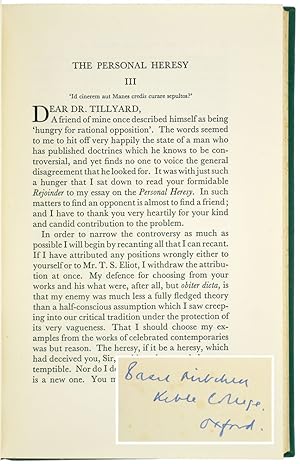
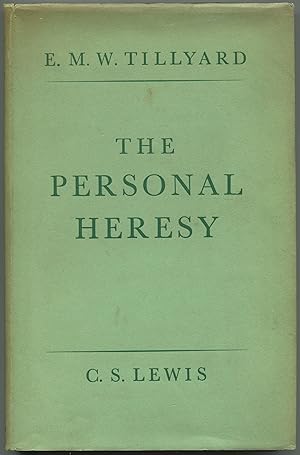
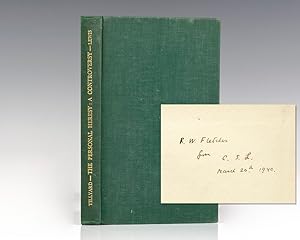

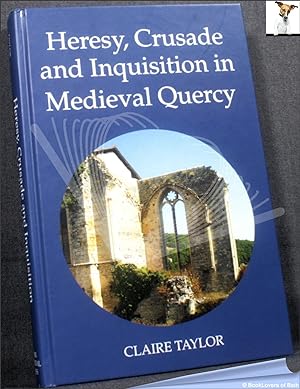
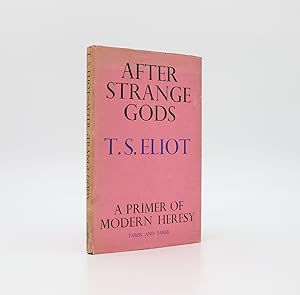
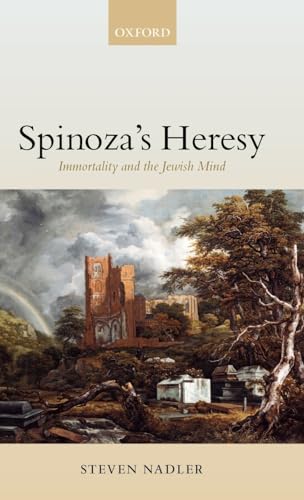
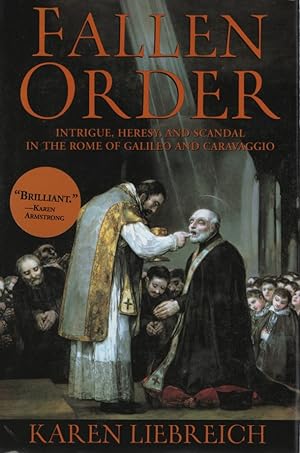
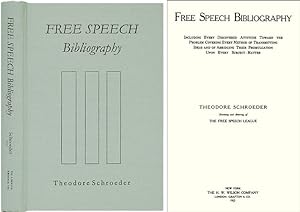
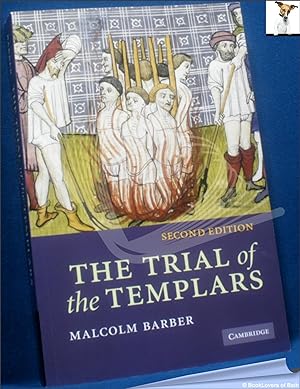
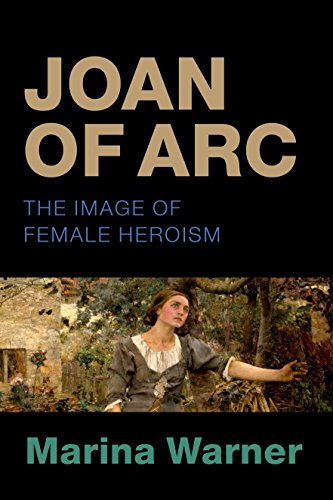

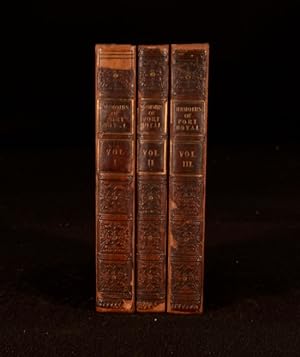
![Bild des Verkäufers für Epitome universam Dan. Sennerti doctrinam summa fide complectens, ex triplici voluminine in unum congestam. Ad usum commodiorem, cum philosophorum, tum medicorum qui Catholicam & Apostolicam fidem in veritate profitentur [.] Per Claudium Bonnetium Avenionensem doctorem & professorem medicum, & celeberrimae Aven. & Monspeliensis academiae alumnum adjectis quibusdam non vulgaribus notatiunculis in praxi animadversis per asterismum designatis. Cum duplici indice, altero librorum & capitum: altero vocum & sententiarum locupletissimo zum Verkauf von Libreria Alberto Govi di F. Govi Sas](https://pictures.abebooks.com/inventory/md/md31028777162.jpg)
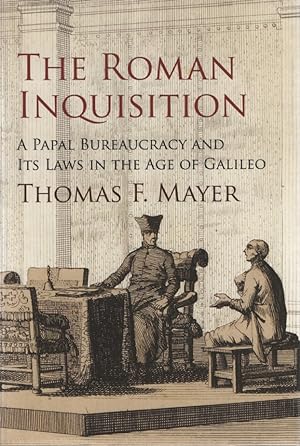

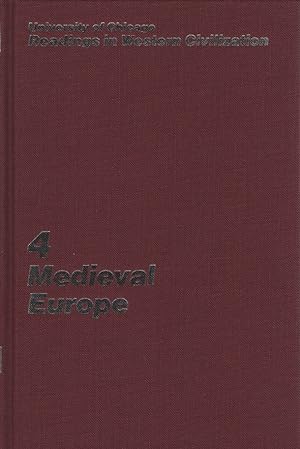
![Bild des Verkäufers für Contra Petrobrusianos hereticos [Corpus Christianorum: Continuatio Mediaevalis X] zum Verkauf von ERIC CHAIM KLINE, BOOKSELLER (ABAA ILAB)](https://pictures.abebooks.com/inventory/md/md14086091579.jpg)
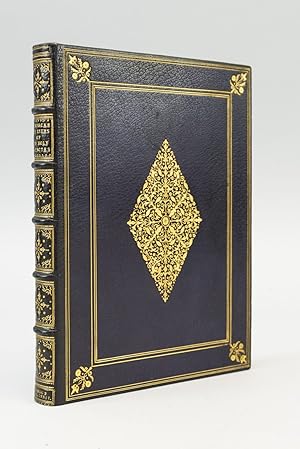
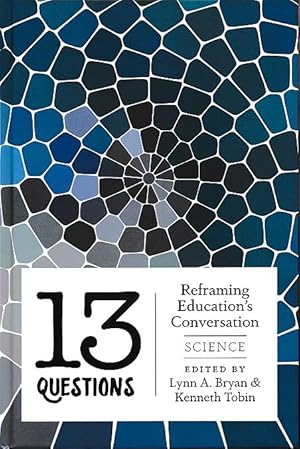
![Bild des Verkäufers für Opera.[with] Opus eruditissimum [ ] in quinque libros digestum. zum Verkauf von Sokol Books Ltd. ABA ILAB](https://pictures.abebooks.com/inventory/md/md30763063606.jpg)
![Bild des Verkäufers für 1917. Yroki Oktobrya. [I.e. later translated into Engkish as "Lessons of October 1917]. - [THE FALL OF TROTSKY] zum Verkauf von Lynge & Søn ILAB-ABF](https://pictures.abebooks.com/inventory/md/md30470935598.jpg)
